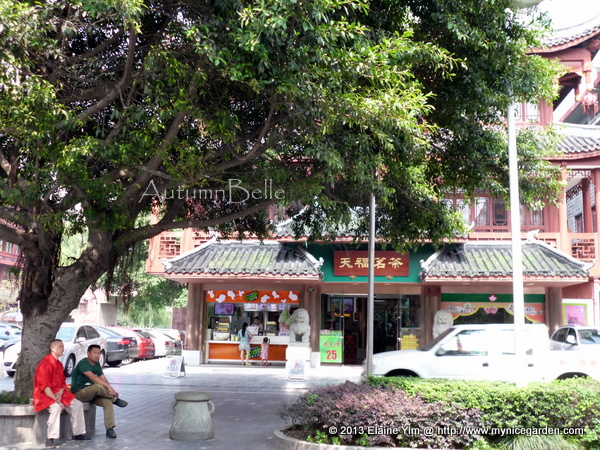 |
| 1. |
Qintai Road in Chengdu (成都琴台路) was the first landmark in Chengdu that we visited. Actually we were supposed to take an early morning flight to Jiuzhaigou and begin our 2-day visit to Jiuzhaigou. However, the flight was postponed to 5pm, hence our tour itinerary has to be reshuffled.
The above is a picture of the Copper Horse Carriage near the entrance of Qintai Road.
 |
| 2. |
Qintai Street is built in the styles of Ming and Qing dynasties (1368 – 1911). “Qintai” 琴台literally means “the stage for musical instruments”. "Qin" is an ancient string instrument aka the zitter or guzheng 古(箏)
“Chengdu Juizhaigou Huanglong 9D 7N - Day 2 Chengdu Qintai Raod”, a copyrighted post, was written for My Malaysia Daily Photo blog by Autumn Belle @ http://mymalaysiadailyphoto.blogspot.com on 26 Aug 2013.
 |
| 3. |
Quite a fanciful street with ancient Chinese architectural style.
A pair of Chinese lions guard the main entrances to buildings.
 |
| 4. |
The arch entrance to Qintai Road
 |
| 5. |
A stone statue of the male Chinese Lion.
 |
| 6. |
A female Chinese Lion.
 |
| 7. |
Almost every building is unique and worth photographing here, including this one!
 |
| 8. |
In Chengdu, it is common to see people riding on motorcycles without wearing helmets. In the picture above, the lady is driving a red motorbike with a pink umbrella fasten to her back seat.
 |
| 9. |
 |
| 10. |
Buildings with stone, wood and copper carvings showcase the culture during the Western Han Dynasty.
 |
| 11. |
It is common to see Green Volkswagens which are the taxis in Chengdu.
 |
| 12. |
A three-wheeled motorcycle taxi in Chengdu.
 |
| 13. |
The night scene at Qintai Road is fantastic!
 |
| 14. |
They like to grow trees and plants on rooftops.
 |
| 15. |
Even hotels, restaurants and offices are build with the classical theme.
 |
| 16. |
There are many jewelry stores in Qintai Road, Chengdu.
 |
| 17. |
Big trees and giant bonsai trees and lush greenery are found everywhere on both sides of the walkway. Tea drinking and group mahjong sessions on the sidewalks and under the yum-yum trees are common in Chengdu.
 |
| 18. |
The Shu Feng Ya Yun is a theatre for Sichuan Opera.
Here, one can enjoy the local tea, opera, art and culture shows.
Here, one can enjoy the local tea, opera, art and culture shows.
 |
| 19. |
This road is named “Qintai” in honour of Sima Xiangru and Zhuo Wenjun whose love story dates back more than 2,000 years ago to the Han Dynasty (202 BC - 8 AD).
 |
| 20. |
It happened in a small town near Chengdu. Zhuo Wenjun was the pretty daughter of wealthy family who was widowed at a very young age. Sima Xiangru was a poor scholar skilled in music and poetry. During a chance meeting one day, Sima's playing of the "qin" had mesmerized and impressed Zhuo so much that she fell in love with him. Her parents objected to the relationship because Sima was a penniless scholar. So the lovers decided to elope. They came to the the western end of Chengdu which is the present Qintai Road. They made a living by running an inn selling liquor. Sima continued with his studies until he passed the imperial examinations in Chang'an (the present Xian). Chang'an was the capital of the Han Empire at that time. Sima continued to advance his career in Chang'an and moved up the social ladder while his wife stayed on in Chengdu. She waited and waited be he didn't return home. After 5 years, Sima wrote a letter to Zhuo and told her his intention to have a concubine in Chang'an. Zhuo was devastated and she wrote back a reply where she penned a famous poem, reminding him of the love and beautiful memories they once had. After reading this, Sima felt ashamed of himself and he gave up the thought of having a concubine. Instead, he drove a four-horse carriage back to Chengdu to take his wife to Chang'an where they were reunited and lived happily ever after.
No comments:
Post a Comment
Yay, I have comments!
Thank you very much for visiting my blog.
Autumn Belle